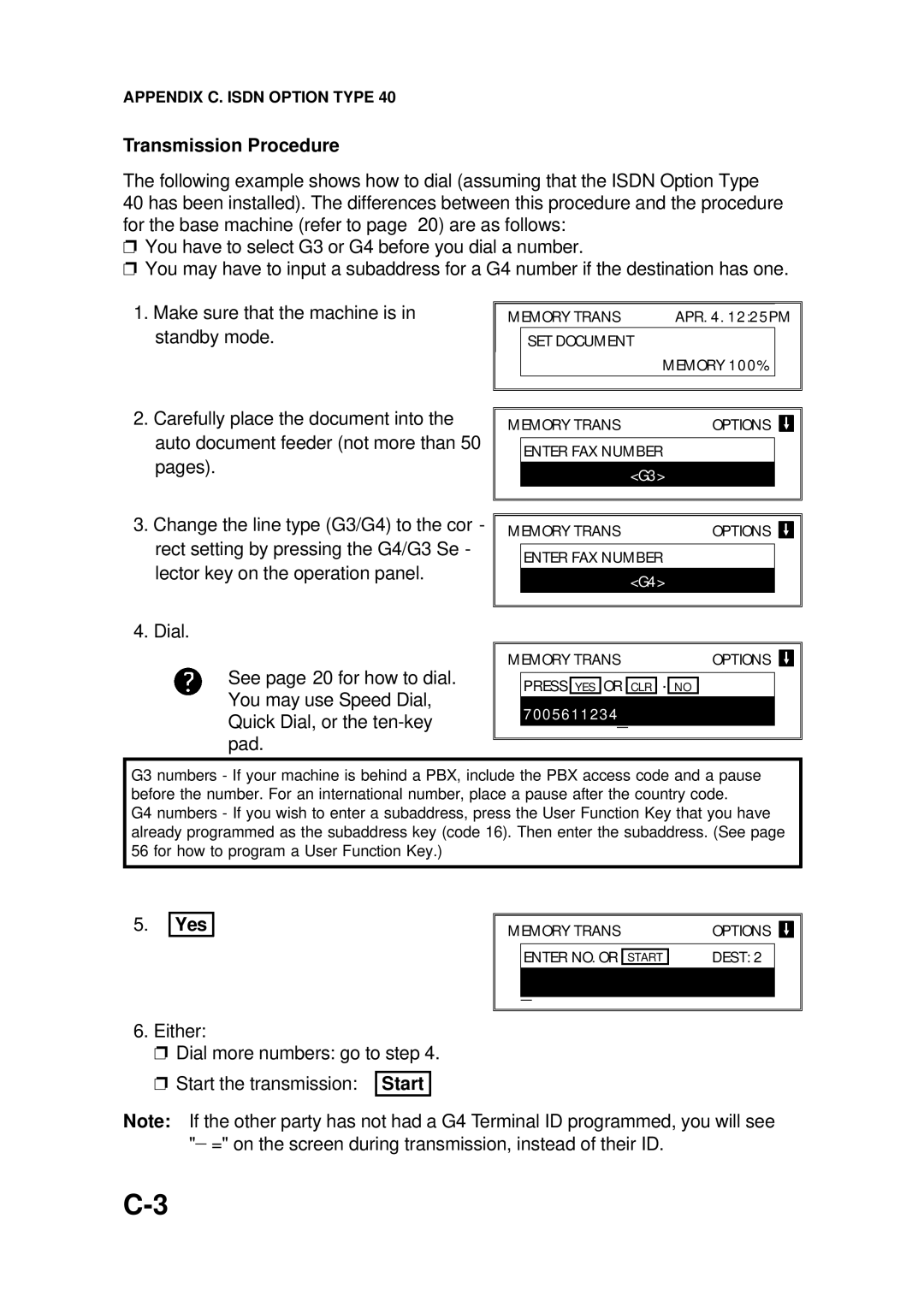
APPENDIX C. ISDN OPTION TYPE 40
Transmission Procedure
The following example shows how to dial (assuming that the ISDN Option Type
40 has been installed). The differences between this procedure and the procedure for the base machine (refer to page 20) are as follows:
❐You have to select G3 or G4 before you dial a number.
❐You may have to input a subaddress for a G4 number if the destination has one.
1.Make sure that the machine is in standby mode.
MEMORY TRANS | APR. 4. 12:25PM | ||
| SET DOCUMENT |
|
|
|
| MEMORY 100% |
|
|
|
| |
|
|
|
|
2.Carefully place the document into the auto document feeder (not more than 50 pages).
MEMORY TRANS | OPTIONS |
ENTER FAX NUMBER |
|
<G3> |
|
3.Change the line type (G3/G4) to the cor - rect setting by pressing the G4/G3 Se - lector key on the operation panel.
MEMORY TRANS | OPTIONS |
ENTER FAX NUMBER |
|
<G4> |
|
4. Dial.
See page 20 for how to dial. You may use Speed Dial, Quick Dial, or the
MEMORY TRANS | OPTIONS |
PRESS YES OR CLR . NO |
|
7005611234_ |
|
G3 numbers - If your machine is behind a PBX, include the PBX access code and a pause before the number. For an international number, place a pause after the country code.
G4 numbers - If you wish to enter a subaddress, press the User Function Key that you have already programmed as the subaddress key (code 16). Then enter the subaddress. (See page 56 for how to program a User Function Key.)
5.Yes
6.Either:
❐Dial more numbers: go to step 4.
❐Start the transmission: Start
MEMORY TRANS |
| OPTIONS |
ENTER NO. OR | START | DEST: 2 |
_ |
|
|
Note: If the other party has not had a G4 Terminal ID programmed, you will see "_ =" on the screen during transmission, instead of their ID.
